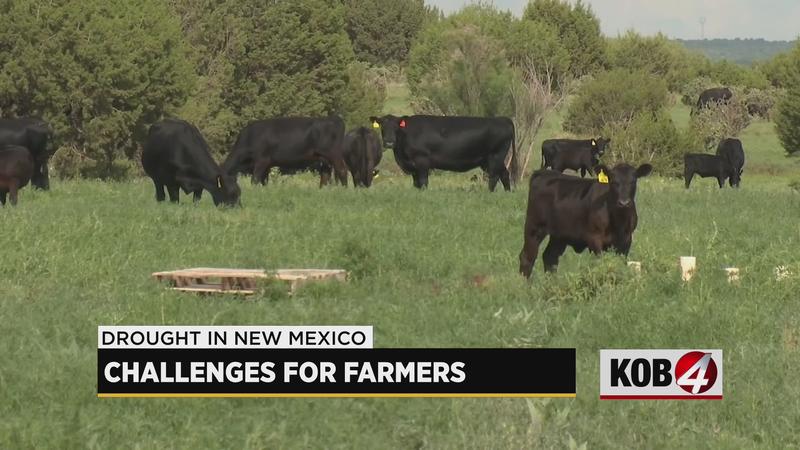Livestock farmers forced to make difficult decisions amid drought
[anvplayer video=”5043439″ station=”998127″]
ALBUQUERQUE, N.M.- A livestock farmer in Torrance County is starting to see some relief with monsoon rains helping turn his fields green. But Kenneth McKenzie said the drought is still impacting his daily life.
"Droughts really impact us because our costs, our feed costs, we’re down on our numbers," he said. "We’re running 75%, our production is 75% of what we should be."
Cattle hadn’t grazed normally for a year. When that happens, ranchers bring in alfalfa and other supplemental food. That’s led to a 60% increase in feeding costs for McKenzie.
McKenzie and other farmers are forced to make tough decisions, like de-stocking.
McKenzie said he had 1,100 cattle, and is now down to 800.

"(If you) don’t have production, you don’t have any income," he said. "We make our living off of raising calves."
And other parts of the industry are having problems, including processors which is leading to delays, and squeezing profits further.
The recovery won’t happen overnight. It will take years.
According to agriculture researchers at New Mexico State University, it’s been a very severe case of drought.
"It can affect the ranching enterprise in a number of different directions," Craig Gifford said.
Gifford says the last time the drought was anywhere close to this bad for livestock farmers was nearly 10 years ago.
Now, some ranchers have removed all their cattle.
In total, New Mexico had 450,000 cattle, and Gifford said the state could lose 100,000 because of de-stocking.
"It’s going to be pretty significant, I think," Gifford said.
McKenzie, however, says he’s forever an optimist.
"As long as people still want to eat, and hopefully we can produce something at a price that they can afford, hopefully we can stay in business," McKenzie said.